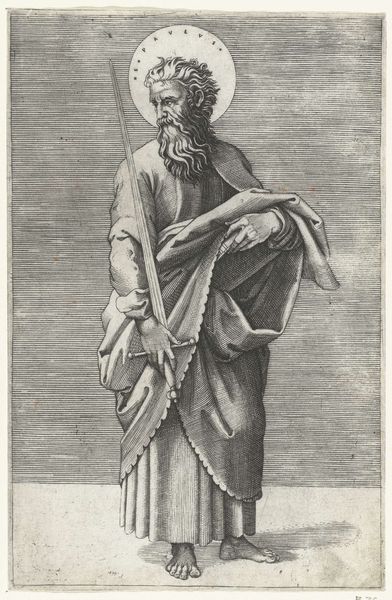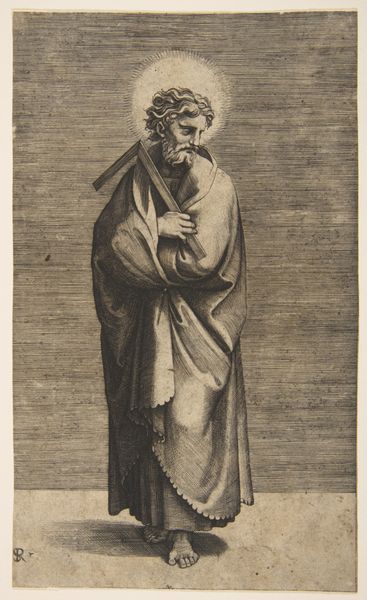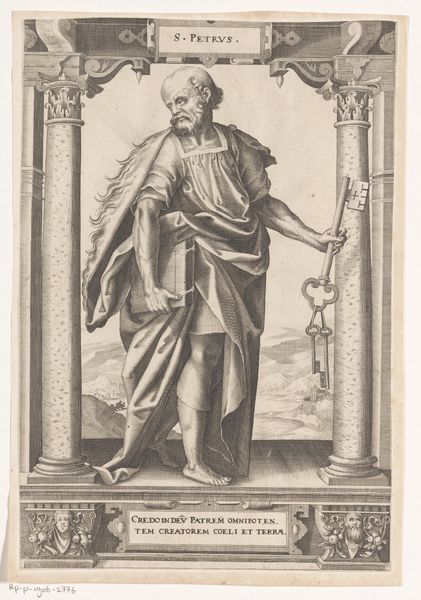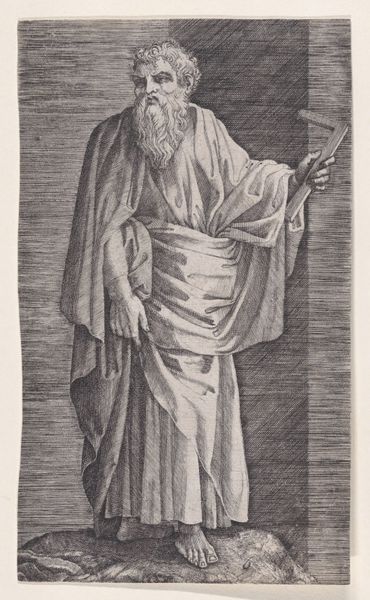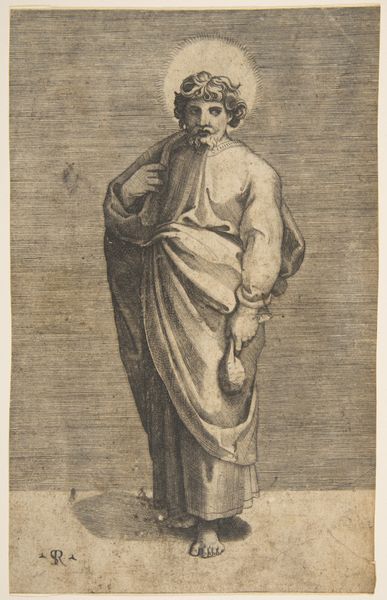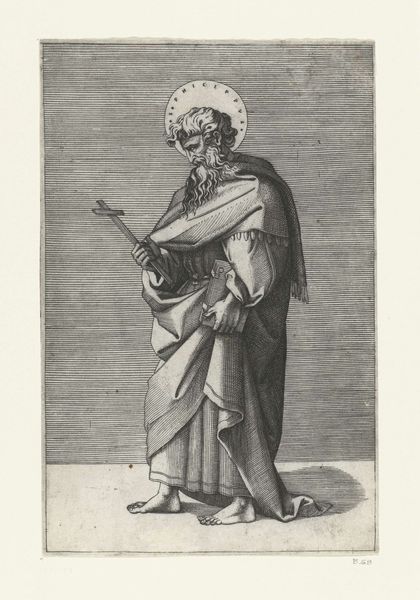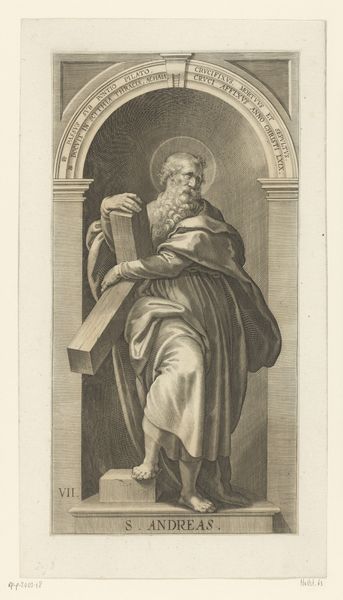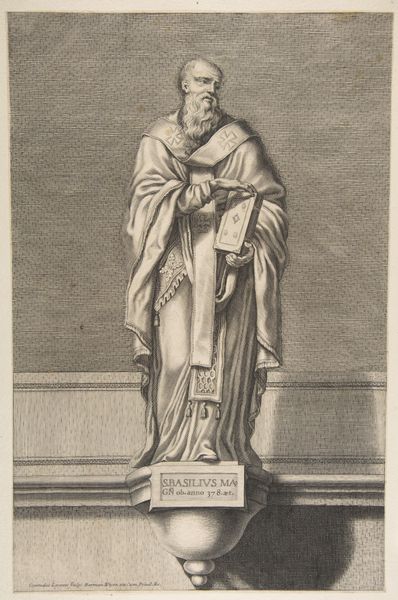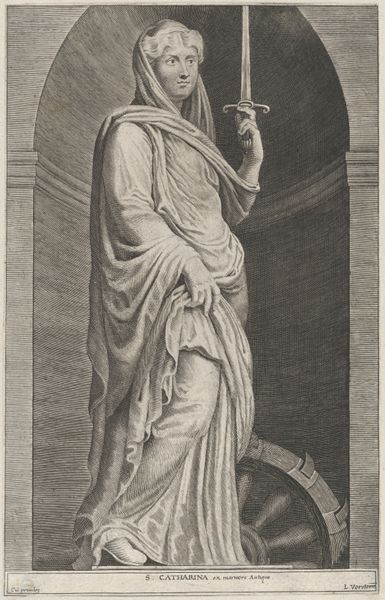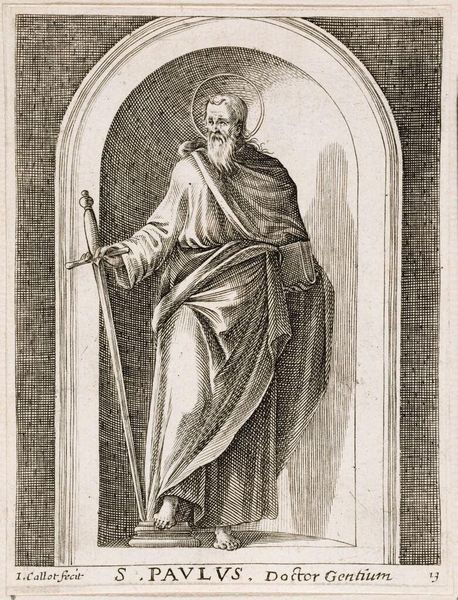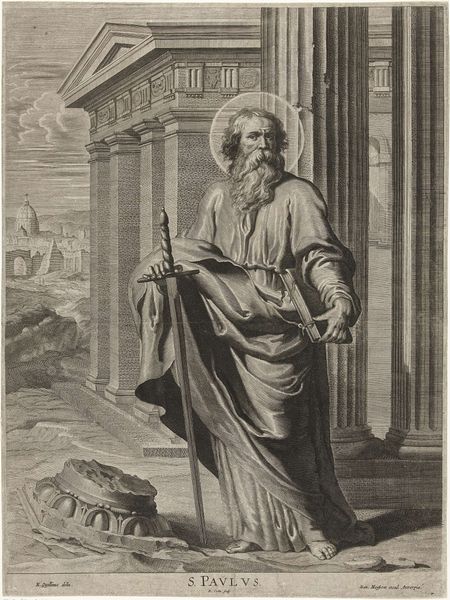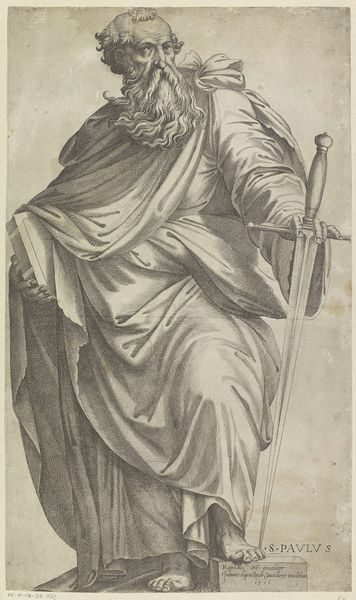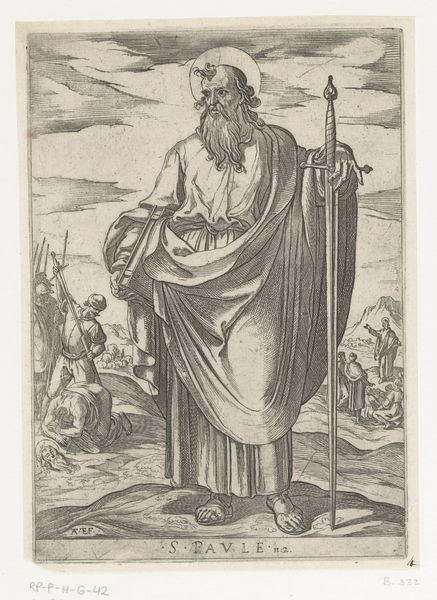
print, engraving
#
portrait
# print
#
figuration
#
history-painting
#
italian-renaissance
#
engraving
Dimensions: height 213 mm, width 139 mm
Copyright: Rijks Museum: Open Domain
Editor: Here we have Marcantonio Raimondi's "Apostel Paulus met zwaard," an engraving from the early 16th century depicting the Apostle Paul with a sword. The image feels remarkably austere, even monumental. How do you interpret this work, considering its historical context? Curator: Well, this engraving gives us insight into the public role of religious imagery during the Renaissance, and particularly its function within Reformation debates. Consider that printmaking enabled the mass distribution of images. How might a depiction of Paul, emphasizing his strength and resolve with that prominent sword, function within that socio-political landscape? Editor: I hadn't thought of it that way. The sword certainly feels like a potent symbol. Do you think it's meant to suggest something beyond literal defense? Curator: Absolutely. The sword is an attribute, associating Paul with the Word of God, his writings and sermons which powerfully converted so many people, as well as martyrdom. Raimondi worked in a printmaking workshop that would have certainly been very mindful of these visual connections to established and evolving meanings and political climates. The austere style itself contributes, framing Paul as a serious, intellectual, even warrior-like figure. In fact, can you describe where it looks like Paul is standing? Editor: He appears to be standing between two pillars. Are you suggesting the pillars might add symbolic meaning? Curator: Potentially! Pillars, in this context, can signify strength, faith, and perhaps even the foundations of the Church. Given the Reformation context, with emerging challenges to the established Church's authority, how might those pillars reinforce or challenge conventional understandings of faith and power? Editor: This makes me realize I was only thinking about it aesthetically. I am much more aware of the many dimensions through which we could analyse the role and intention of art from that period. Curator: Precisely. By considering the historical, social, and religious forces at play, we start to understand this engraving's deeper cultural resonance and Raimondi’s perspective and position as an artist and public figure in the Italian Renaissance.
Comments
No comments
Be the first to comment and join the conversation on the ultimate creative platform.
